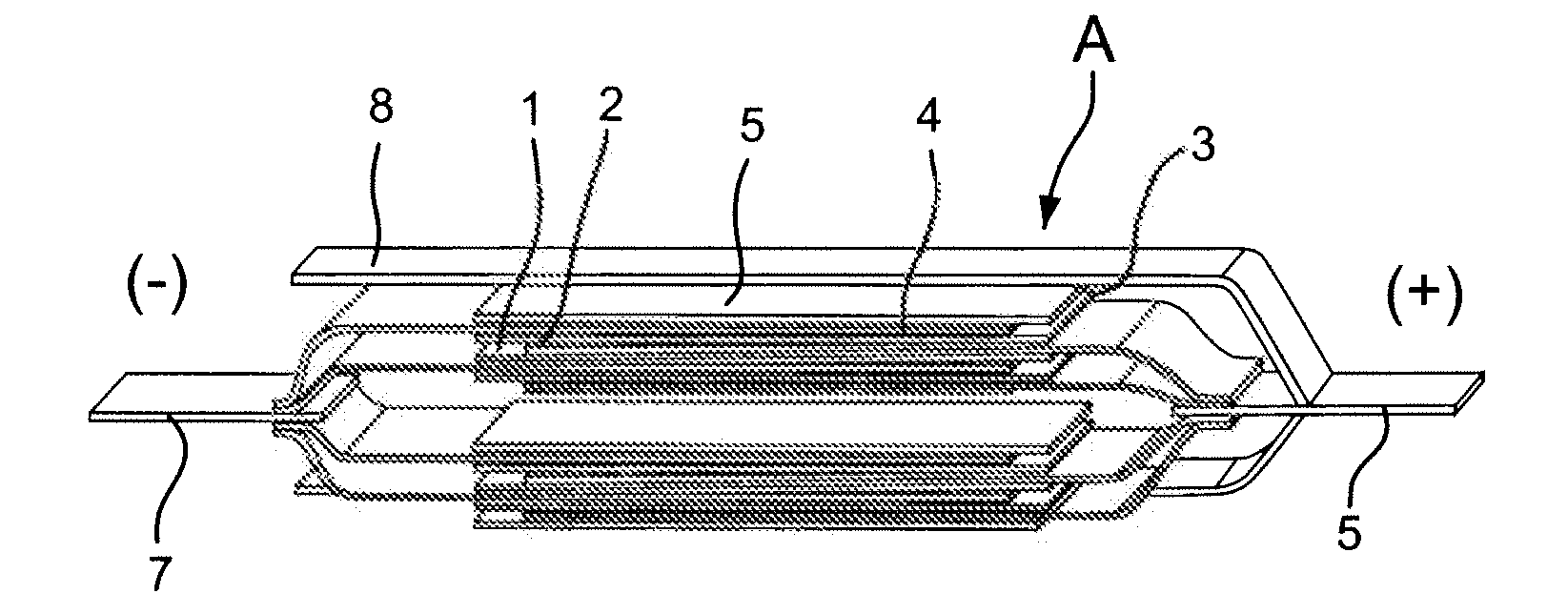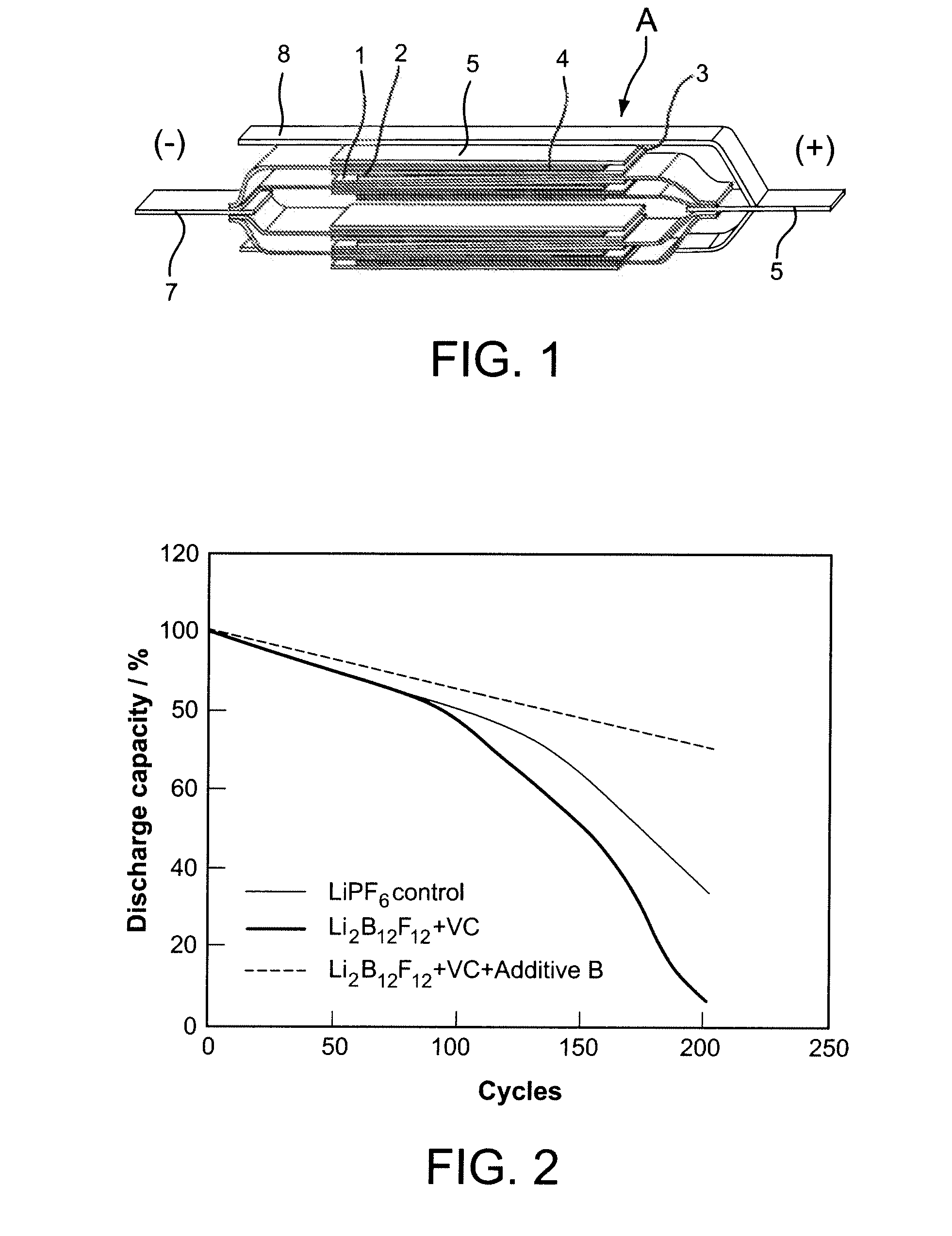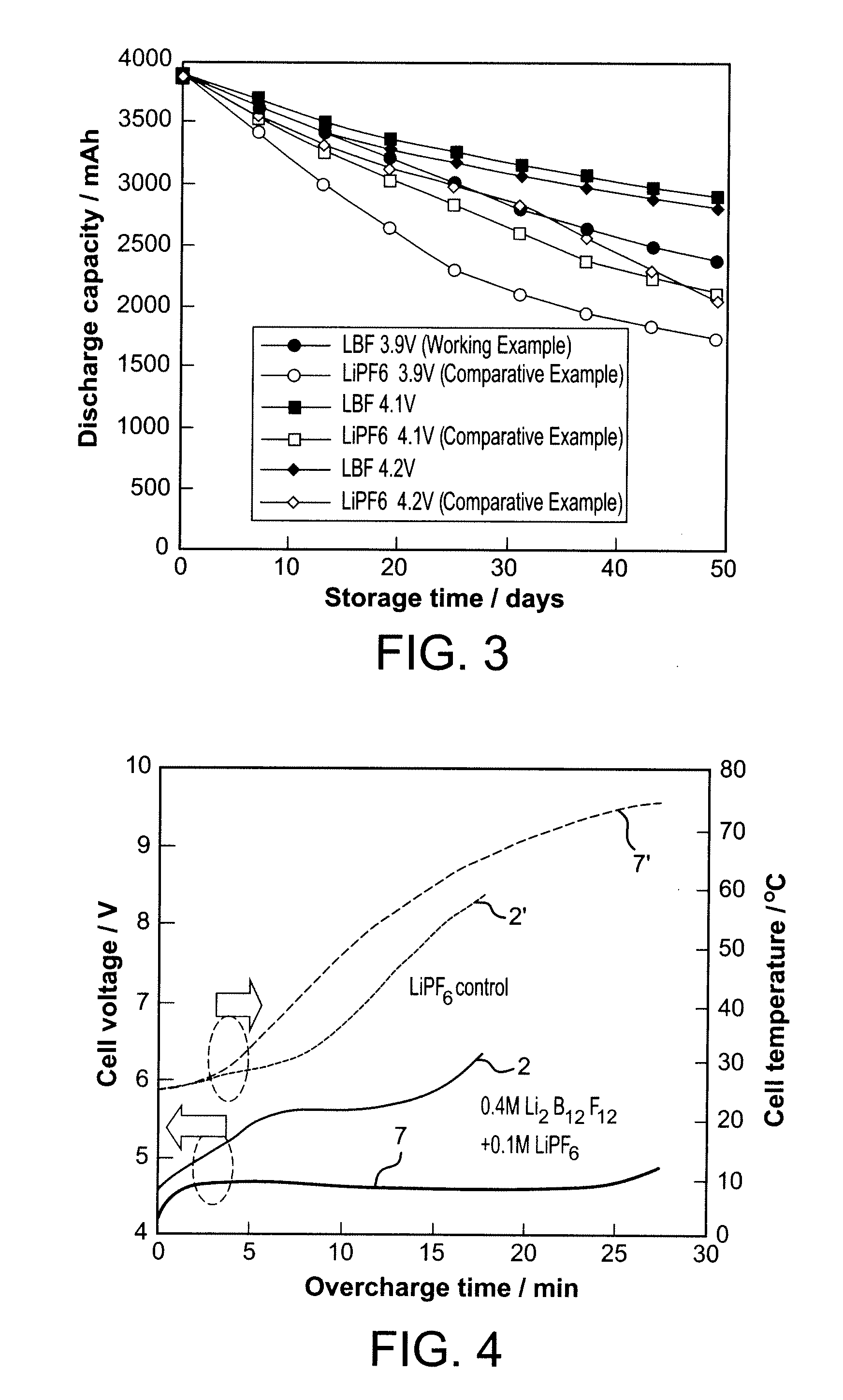Nonaqueous Electrolyte
- Summary
- Abstract
- Description
- Claims
- Application Information
AI Technical Summary
Benefits of technology
Problems solved by technology
Method used
Image
Examples
production example 1
[0061][Preparation of Li2B12HxF12−x (x=0-3)]
[0062]A colorless slurry containing 2.96 g (11.8 mmol) of K2B12H12CH3OH in 6 mL of formic acid at an average Hammett acidity of H0=−2 to −4 was fluorinated at 0-20° C. 100% of the desired F2 (142 mmol) was added as a mixed gas of 10% F2 / 10% O2 / 80% N2, and a colorless solution remained. A solid precipitated from the solution through further fluorination (3%) at 30° C. A quantity of 5.1 g of a colorless, brittle solid was obtained by evacuating the solvent overnight. This crude product was analyzed by 19F NMR and was found to be mainly B12F10H22− (60%), B12F11H2− (35%), and B12F122− (5%). The crude product was dissolved in water, and the pH of the solution was adjusted to 4-6 using triethylamine and triethylamine hydrochloride. The precipitated product was filtered out, dried, and again suspended in water. Two equivalents of lithium hydroxide monohydrate was added to this slurry, and the resulting triethylamine was evacuated. After distillin...
production example 2
[0063][Preparation of Li2B12FxH12−x (x=10−12)]
[0064]A colorless slurry containing 2.96 g (11.8 mmol) K2B12H12CH3OH in 6 mL formic acid at an average Hammett acidity of H0=−2 to −4 was fluorinated at 0 to 20° C. 100% of the desired F2 (142 mmol) was added as a mixture of 10% F2 / 10% O2 / 80% N2, and a colorless solution remained. A solid precipitated from the solution through further fluorination (3%) at 30° C. A quantity of 5.1 g of a colorless, brittle solid was obtained by evacuating the solvent overnight. This crude product was analyzed by 19F NMR and was found to be mainly B12F10H22− (60%), B12F11H2− (35%), and B12 F122− (5%). The crude product was dissolved in water, and the pH of the solution adjusted to 4-6 using triethylamine and triethylamine hydrochloride. The precipitated product was filtered, dried, and again suspended in water. Two equivalents of lithium hydroxide monohydrate was added to this slurry, and the resulting triethylamine was evacuated. After distilling off all ...
production example 3
[0065][Preparation of Li2B12FxBr12−x (x≧10, average x=11)]
[0066]A quantity of 3 g (0.008 mol) of Li2B12FxH12−x (x≧10) of an average composition of Li2B12F11H was dissolved in 160 mL of 1 M HCl (aq). A quantity of 1.4 mL (0.027 mol) of Br2 was added, and this mixture was refluxed for four hours at 100° C. A sample was taken for NMR analysis.
[0067]Part of the above sample was returned to reflux, and chlorine was added over six hours to form a stronger brominating agent BrCl. An aliquot as taken when chlorine addition was completed, and NMR analysis showed the composition of this aliquot to be the same as that of the starting aliquot. The HCl and water were distilled off, and the product was vacuum dried at 150° C. A total of 2.55 g of a white, solid product was isolated. The theoretical amount of Li2B12FxBr12−x (x≧10, average x=11) was 3.66 g.
PUM
| Property | Measurement | Unit |
|---|---|---|
| Time | aaaaa | aaaaa |
Abstract
Description
Claims
Application Information
 Login to View More
Login to View More - R&D
- Intellectual Property
- Life Sciences
- Materials
- Tech Scout
- Unparalleled Data Quality
- Higher Quality Content
- 60% Fewer Hallucinations
Browse by: Latest US Patents, China's latest patents, Technical Efficacy Thesaurus, Application Domain, Technology Topic, Popular Technical Reports.
© 2025 PatSnap. All rights reserved.Legal|Privacy policy|Modern Slavery Act Transparency Statement|Sitemap|About US| Contact US: help@patsnap.com



